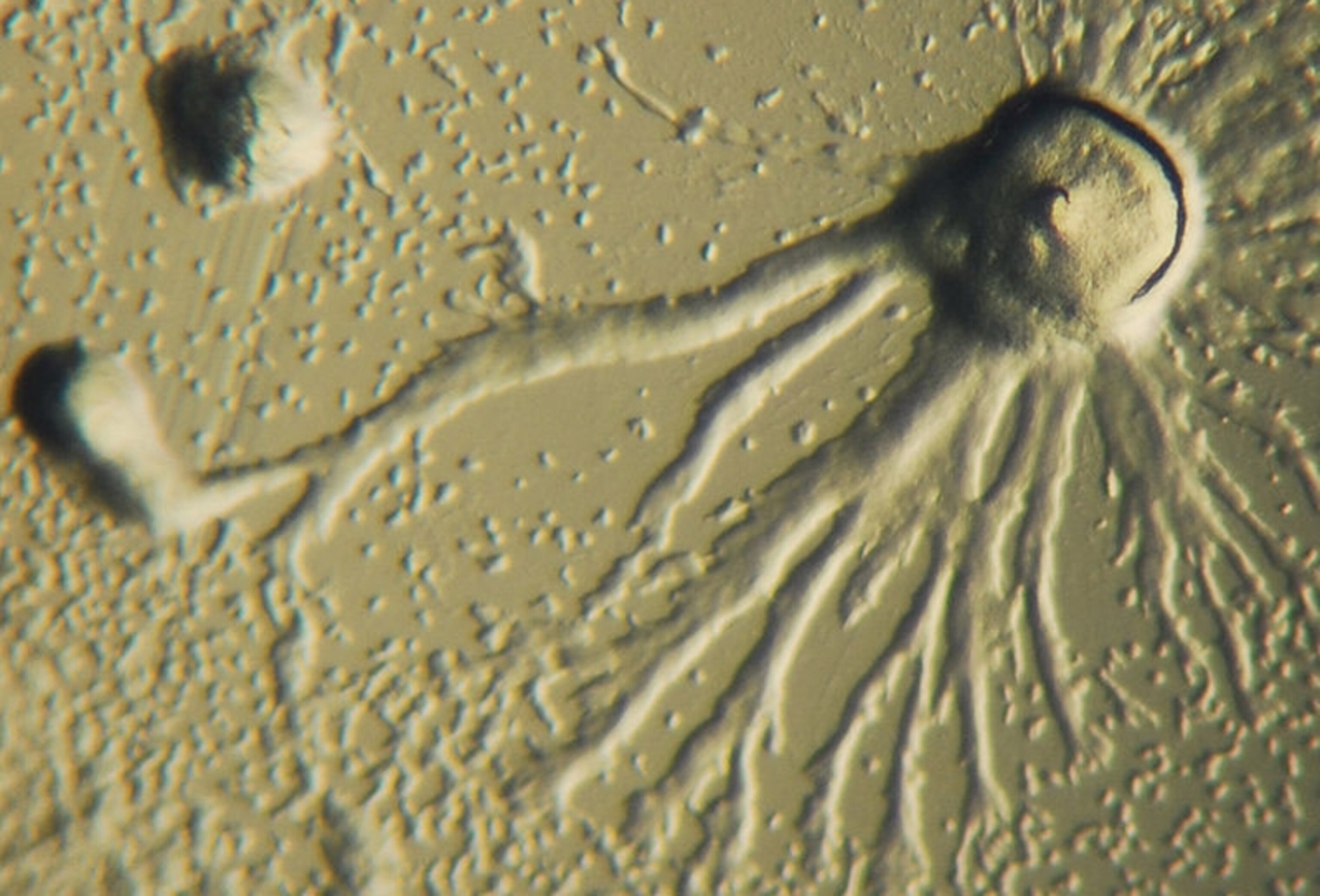
How the World’s Smallest Farmers Turned Chemists Into Food
Wild grasses, like wheat, rice and barley, have long stalks that shatter to spread their seeds over the surrounding soil. But this doesn’t always work. A small number of genetic changes (mutations) can lead to shatter-proof stalks, whose seeds stay in place. These mutations are bad for the plant, but they’re spectacularly convenient for humans because they concentrate seeds in one easy-to-harvest place.
When our ancestors collected these mutant grains, they spilled some on the way back to camp, or excreted the seeds on their latrines. They might even have planted some deliberately. Either way, those shatterproof mutations—typically, one per crop—became some of the most critical in human history. They allowed us to domesticate the plants that fuelled the agricultural revolution, and that still feed the majority of the world today.
But this wasn’t the first or only time that small genetic changes gave rise to agriculture.
A social amoeba called Dictyostelium discoideum—let’s call it Dicty—carries bacteria inside it, which provide it with useful chemicals. But with just one mutation, these bacteria start making a different set of substances that make them more edible. Through one little change, these chemists turned into food, and the amoebas became the world’s smallest farmers.
Dicty spends most of its life as a single amoeba-like cell that feeds on bacteria. When their food runs out, many of these cells ooze towards each other and merge into a many-celled slug. When the slug gets big enough, it stretches skywards into a long stalk, tipped with a spore-filled capsule. The capsule eventually breaks and scatters its spores to the wind. When these land, they hatch into new amoebas, and the cycle starts anew.
In 2011, a team of scientists including postdoc Debbie Brock, now at Washington University in St Louis, discovered that Dicty is also a farmer. Many of the amoebas carry edible bacteria inside them. When they land in a new spot, they seed their environment with this livestock, starting their new lives with a ready supply of food.
But Dicty only eats half of these bacteria. The rest are apparently inedible. Why would the amoebas carry such passengers?
Brock, together with postdoc Pierre Stallforth, have now discovered the answer. The inedible bacteria produce at least two beneficial chemicals that the edible ones don’t. The first—pyrrolnitrin—kills soil-living fungi, including those that cause disease. The second—a newly discovered substance called chromene—helps Dicty to make more spores.
But Stallforth and Brock also found that these inedible bacteria are virtually identical to the edible ones—they’re both different strains of the same species, Pseudomonas fluorescens. The only thing that separates them is a single mutation that’s found in the edible bacteria, which disables a gene called GacA. When the team deleted the gene from the inedible strains, they stopped producing pyrrolnitrin and chromene, and they started serving as food.
The team think that this lone GacA mutation radically changed the nature of P.flourescens’s partnership with Dicty, changing it from a purveyor of helpful chemicals into a food source. It’s not clear why it suddenly became edible, but GacA supervises many other genes and perhaps some of these are responsible.
Whatever the reason, it’s certainly a bizarre situation—some strains of P.flourescens have actually evolved to be more easily eaten by their host. That’s probably because Dicty carries their clone siblings to new locations. Sure, some cells may die, but the rest can prosper in their new homes. It’s the same story for rice and wheat. Their shatter-proof mutations made them easier food for humans but also catalysed their success, as we started planting them all over the world.
Humans and Dicty aren’t the only farmers around. Leafcutter ants grow gardens of fungi using sliced-up leaves. They also harbour antibiotic-secreting bacteria on their bodies, which they use to protect their crops from diseases. Meanwhile, ambrosia beetles sow gardens of fungi on trees, and also defend their crops using bacterial pesticides.
Dicty does something very similar. Like the ants and beetles, it also partners with an edible crop and an antibiotic-producer. But in its case, these partners are virtually the same—two strains of the same microbe, separated by the tiniest of differences.
Reference: Stallforth, Brock, Cantley, Tian, Queller, Strassmann & Clardy. 2013. A bacterial symbiont is converted from an inedible producer of beneficial molecules into food by a single mutation in the gacA gene. PNAS http://dx.doi.org/10.1073/pnas.1308199110
Update: I originally credited the initial discovering of Dicty farming to Jon Clardy, who only became involved in this latest study. Apologies to Dr Brock.
